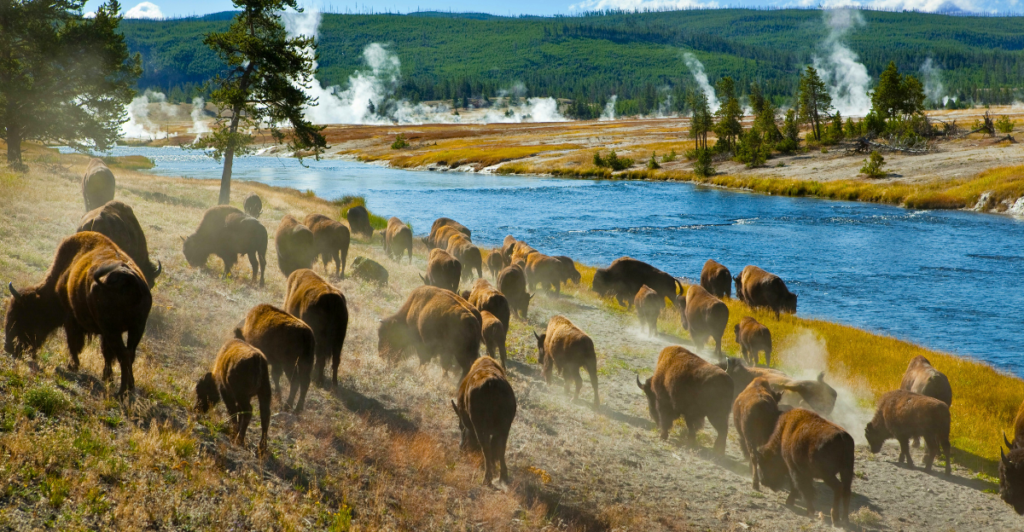
The Yellowstone bison, often called buffalo, are emblematic of America’s wildlife heritage. As the largest land mammals in North America, adult males can weigh up to 2,000 pounds, while females typically weigh around 1,000 pounds. These majestic creatures have roamed the Yellowstone region for thousands of years, adapting to its diverse ecosystems. Their presence is integral to the park’s ecological balance, influencing vegetation patterns and providing sustenance for predators. Observing these animals in their natural habitat offers a glimpse into the continent’s prehistoric past, underscoring their significance in ecological and cultural contexts.
Near Extinction in the 19th Century
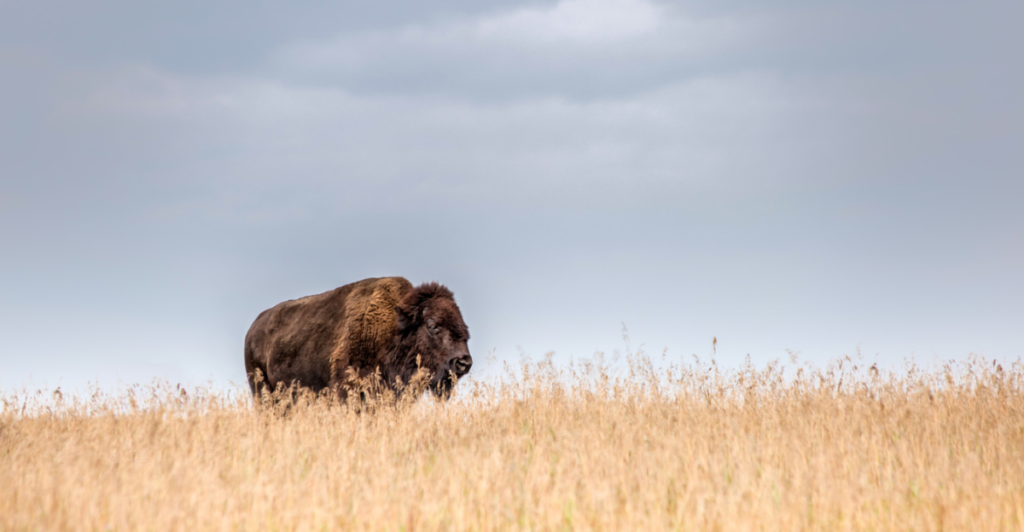
In the late 1800s, the American bison faced catastrophic declines due to unregulated hunting and habitat loss. From an estimated 60 million individuals, their numbers plummeted to fewer than 1,000 by the 1890s. This drastic reduction threatened the species’ survival and disrupted the ecological fabric of the Great Plains. The bison’s near Extinction serves as a poignant reminder of the consequences of unchecked exploitation and the urgent need for conservation measures to protect vulnerable species from similar fates.
The Last Wild Bison of Yellowstone
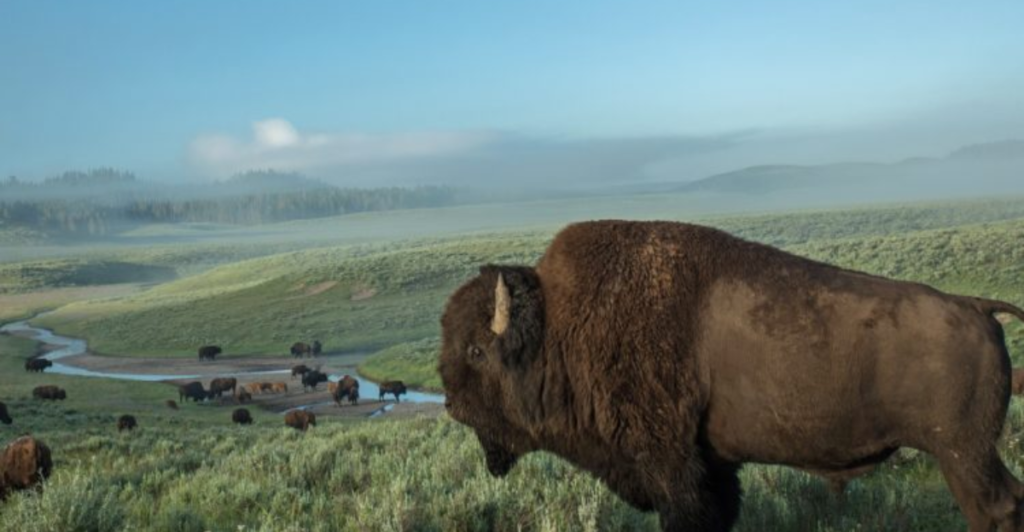
Amid the widespread decline, a small group of bison found refuge in Yellowstone’s remote Pelican Valley. This remnant population, numbering just 23 individuals, represented the last continuously wild bison herd in the United States. Their survival without human intervention is a testament to Yellowstone’s unique environment and the species’ resilience. This group became the foundation for future conservation efforts, highlighting the park’s critical role in preserving America’s natural heritage.
Early Conservation Initiatives
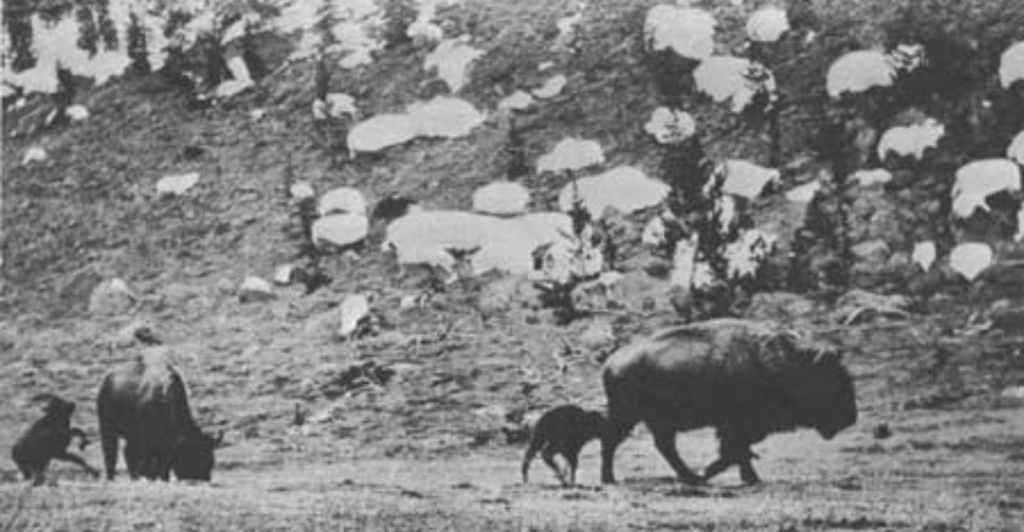
Recognizing the bison’s dire situation, early conservationists took action. In 1902, 21 bison from private herds were introduced to Yellowstone’s Lamar Valley to bolster the population. This initiative aimed to increase genetic diversity and stabilize numbers. Managed as livestock initially, these bison were later integrated into the wild population, marking one of the first successful wildlife restoration projects in the U.S. This effort laid the groundwork for modern conservation practices and demonstrated the feasibility of species recovery.
Establishment of the American Bison Society
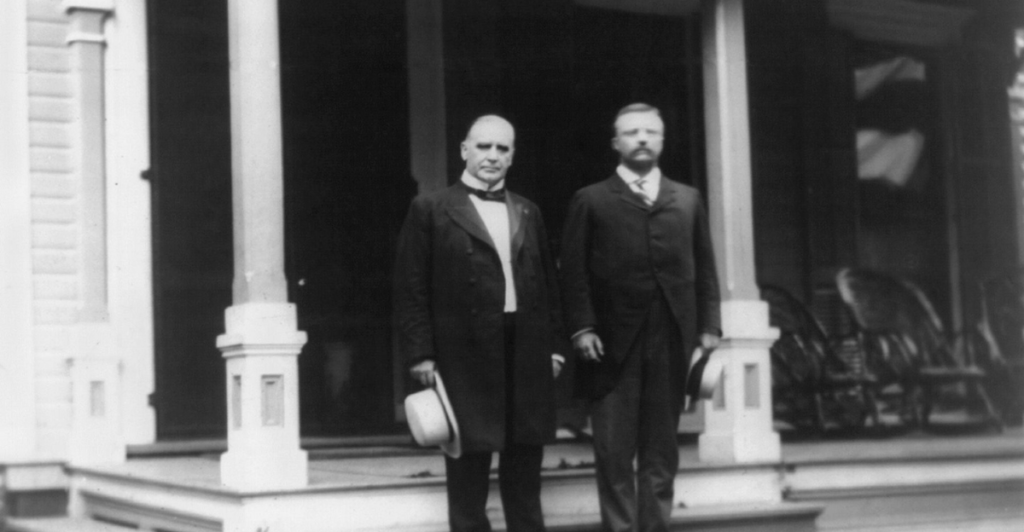
1905, the American Bison Society was founded, with President Theodore Roosevelt as its honorary president. The society aimed to promote bison conservation by establishing reserves and breeding programs. Their advocacy led to the creation of several bison refuges, including the Wichita Mountains Wildlife Refuge in Oklahoma. These efforts were pivotal in preventing the species’ Extinction and set a precedent for future wildlife conservation movements. The society’s work highlighted the importance of coordinated action and public awareness in preserving endangered species.
The Role of Native American Tribes
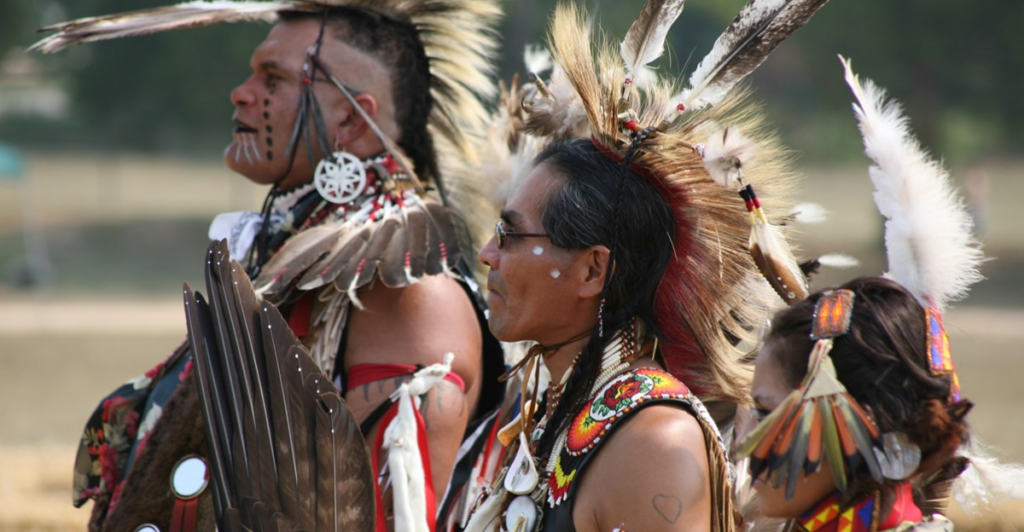
Native American tribes have long held a deep connection to the bison, considering them sacred and integral to their cultures. In recent decades, tribes have taken active roles in bison conservation, establishing herds on tribal lands and participating in management programs. These initiatives aim to restore ecological balance, revive cultural traditions, and provide economic opportunities. Collaborations between tribes and federal agencies have been instrumental in expanding bison habitats and ensuring the species’ long-term survival.
Modern Management Practices
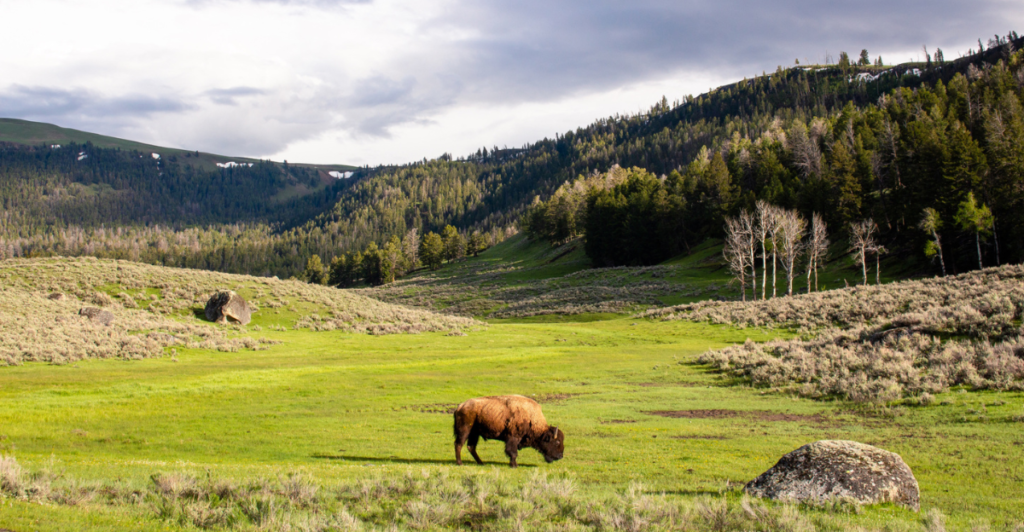
Yellowstone’s bison population is managed through monitoring, culling, and relocation to maintain ecological balance and prevent overgrazing. The Interagency Bison Management Plan, established in 2000, coordinates efforts among federal, state, and tribal entities. This collaborative approach addresses disease transmission to livestock and human-wildlife conflicts. Adaptive management strategies ensure that bison conservation aligns with ecological health, public safety, and cultural values, reflecting a holistic approach to wildlife stewardship.
Genetic Diversity and Health
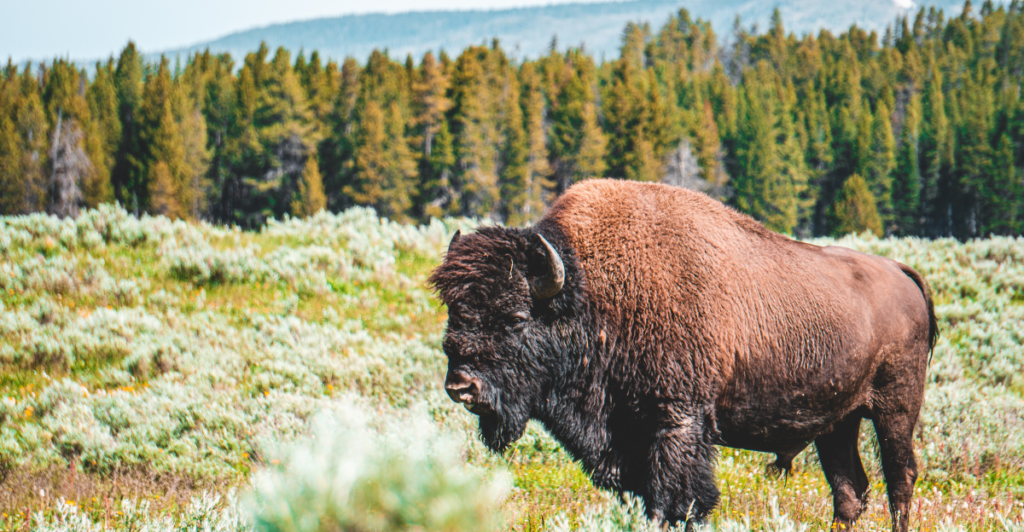
Maintaining genetic diversity is crucial for the bison’s resilience to diseases and environmental changes. Conservationists monitor Yellowstone’s bison for genetic health, minimizing inbreeding. Efforts include translocating individuals to establish new herds and enhance genetic flow. These practices aim to preserve the species’ adaptability and long-term viability, safeguarding them against potential threats and ensuring their continued role in North America’s ecosystems.
Bison as Keystone Species
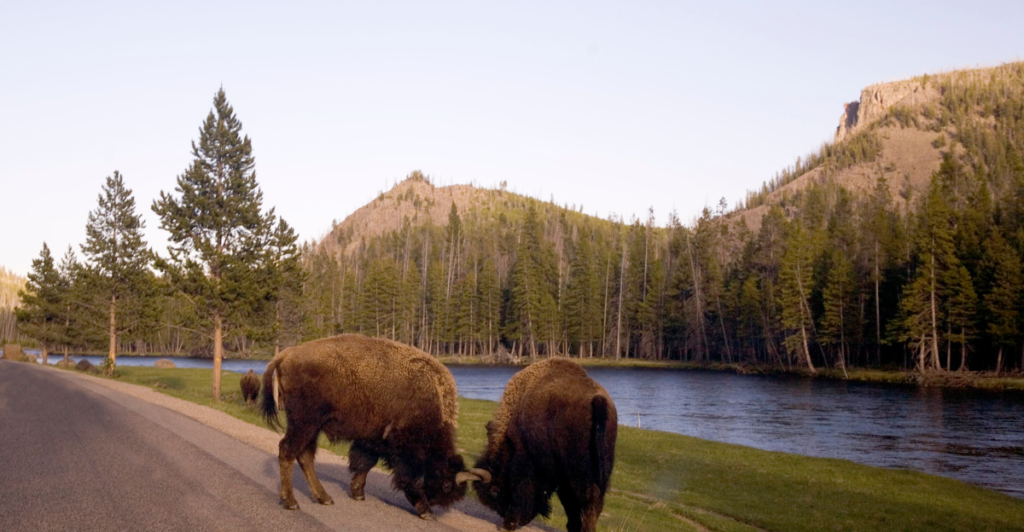
Bison play a pivotal role in shaping their environment. Their grazing patterns promote plant diversity, and their wallowing behavior creates habitats for other species. As ecosystem engineers, bison influence nutrient cycling and support a variety of flora and fauna. Their presence enhances biodiversity, demonstrating the interconnectedness of species within an ecosystem. Protecting bison contributes to the overall health and resilience of the landscapes they inhabit, underscoring the importance of their conservation.
Ecotourism and Economic Impact
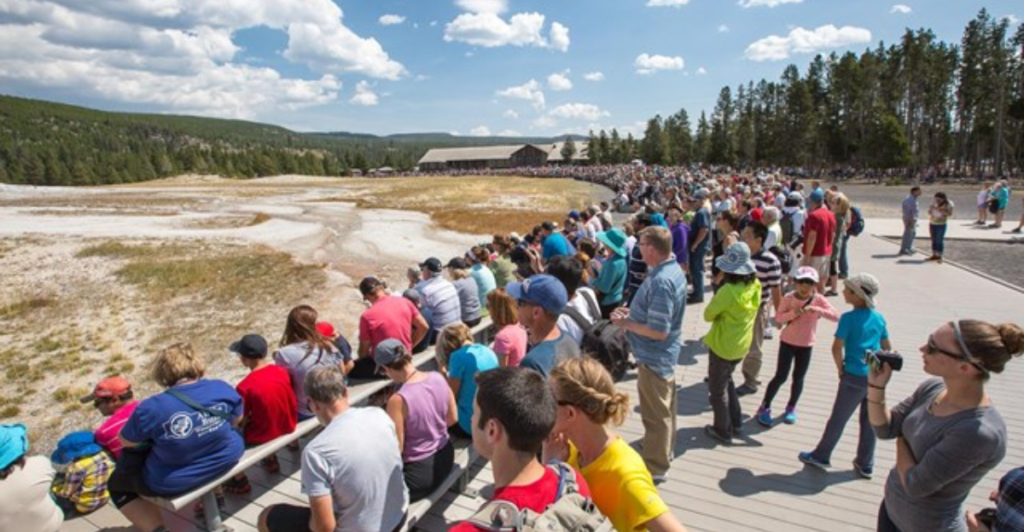
Yellowstone’s bison attract millions of visitors annually, contributing significantly to local economies through tourism. Wildlife enthusiasts and photographers seek opportunities to observe these animals in their natural habitat. This ecotourism fosters a greater appreciation for conservation efforts and generates revenue that supports park maintenance and community businesses. The bison’s iconic status enhances Yellowstone’s appeal as a travel destination, illustrating the economic
Challenges and Controversies in Bison Management
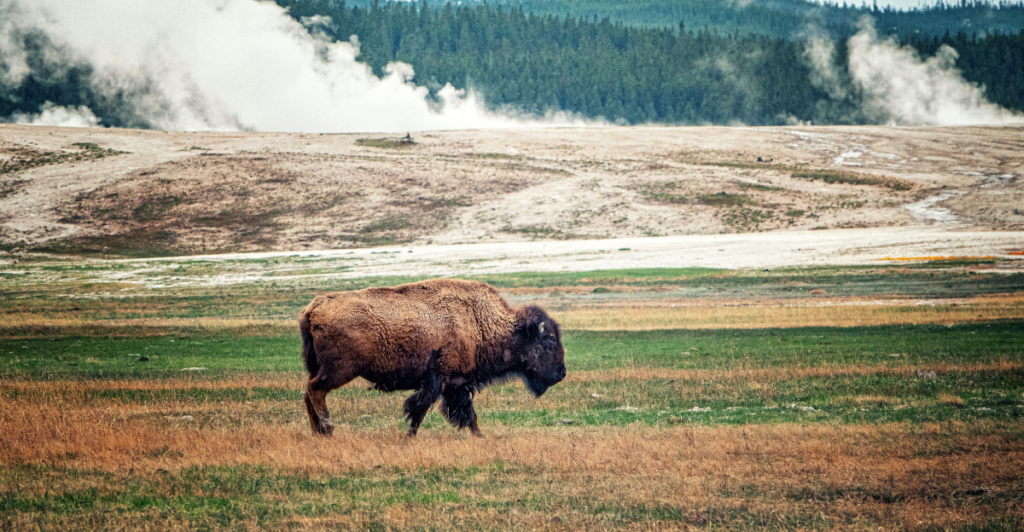
Managing Yellowstone’s bison remains complex, often sparking debate. The primary concern revolves around brucellosis, a disease that can be transmitted from bison to cattle, prompting periodic culls to prevent potential outbreaks. Critics argue that these measures conflict with conservation goals, while proponents stress the need to protect ranching interests. Efforts to relocate disease-free bison to tribal lands and conservation areas offer alternatives to culling. These ongoing discussions highlight the delicate balance between preserving wildlife, supporting local economies, and maintaining ecological stability.
Success Stories and Growing Populations
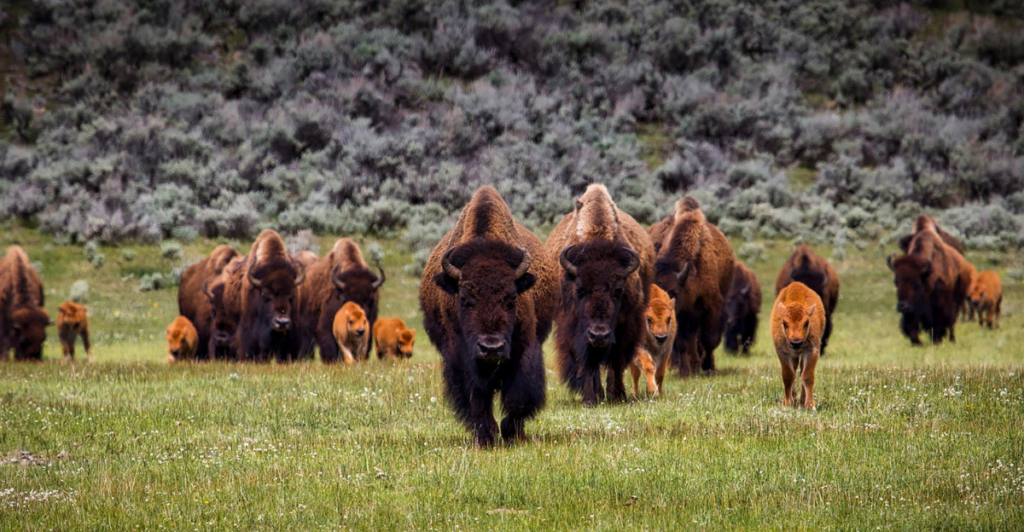
Yellowstone’s bison population has grown from fewer than 25 in 1902 to over 5,000 today, a remarkable conservation success. Translocation programs have helped establish herds in tribal lands and wildlife refuges, spreading genetic diversity and reintroducing bison to historic ranges. The collaboration between Native American tribes, federal agencies, and conservation groups ensures that these iconic animals continue roaming freely, enriching ecosystems and cultural traditions. This progress reflects over a century of dedicated conservation work.
Looking Ahead: The Future of Bison Conservation

The future of Yellowstone’s bison hinges on continued collaboration, scientific research, and public support. Conservationists aim to expand safe habitats, increase genetic monitoring, and build partnerships with tribal nations. Public education and ecotourism also play key roles in fostering a greater understanding of bison’s ecological importance. As these efforts evolve, the goal remains to ensure that the Yellowstone bison endure as a symbol of resilience and a cornerstone of America’s natural heritage.
Explore more of our trending stories and hit Follow to keep them coming to your feed!

Don’t miss out on more stories like this! Hit the Follow button at the top of this article to stay updated with the latest news. Share your thoughts in the comments—we’d love to hear from you!







